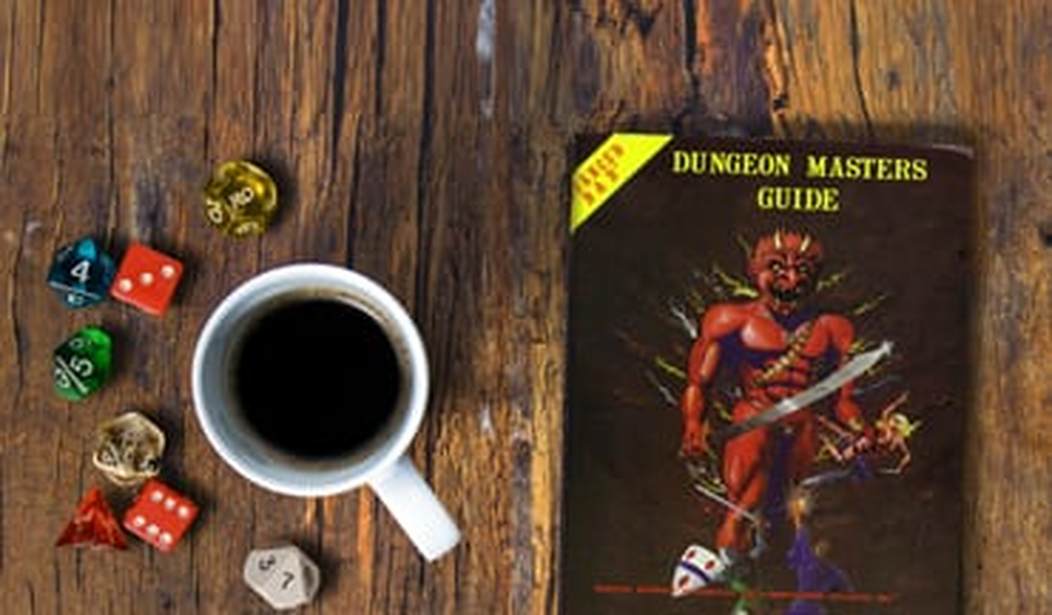Dungeons & Dragons (D&D) is, of course, a staggeringly influential product in the world of gaming, both in the pencil-and-paper and the computer versions. And in about equal measure, probably; certainly every fantasy-themed roleplaying game (RPG) ever created of either kind assumes that you’re familiar with D&D. The game may not assume that you like D&D, but it certainly assumes that you understand the basic concepts.
And one of those concepts is that of alignment. To sum up the D&D alignment system succinctly, it’s as follows: you’re either Good, Evil, or Neutral. And you’re either Lawful, Chaotic, or …Neutral. That gives you one of nine possible alignments (Neutral-Neutral is called True Neutral) to have, which will have an effect on what spells you can cast, what spells can be cast on you, what spells will detect you, and so on. It’s a remarkably fraught system when you think about the implications; after all, having one’s moral quality be fully quantifiable can have any number of implications, starting with the fairly basic one that if something is inherently Evil then you can kill it without any kind of remorse.
Not every RPG uses alignment, of course. Indeed, many of the pen-and-paper ones explicitly don’t use alignment… while still having dungeons where an implicit alignment system is the only thing keeping the adventurers from being, to quote the folks at Steve Jackson Games, “racially motivated thugs” (or “murder hobos,” which is a term I first heard from game writer Emily Dresner) who are killing orcs simply because they can get away with it. To be fair, some games get more seriously into the concept of what’s good and what’s evil; but even then there’s a certain shared assumption in a lot of games that there never have to have to be any non-fun consequences* to bursting into an underground complex full of opponents and killing them all, because after all they were Evil, and so were Asking For It.
Some of this bleeds into computer RPGs, although there are advantages to that type of RPG that pen-and-paper games don’t have. First off, you can handwave Good v. Evil away entirely sometimes in a straight-up first-person shooter (FPS) RPG. “These enemies will attack you on sight! You’re perfectly justified in shooting them.” Combat is a lot simpler and faster in a video game than it is when you’re throwing down dice, so having a faceless horde of enemies who you can’t talk to anyway can be a lot more palatable in the former than it is in the latter. For that matter, if you can talk to a random non-player character NPC that you meet in a computer RPG the assumption there is that you maybe shouldn’t shoot that NPC on general principles, because he, she, or it has something useful for the player. Oh, and finally: the lack of a gamemaster (GM) — or other players — means that the person playing the game is more or less stuck following the ethical and moral rules implicit in the game’s design. Which are at least going to be more likely to be, and stay, internally self-consistent.
Still, some game companies try to work at giving players a range of alignment options. To give some examples… Bioware likes to go with a “Queen of the Girl Scouts” / “Ruthless Bugger” model whenever possible; Bethesda enjoys making you have to choose which faction you’ll have to inexplicably permanently tick off in order to finish the game; and Projekt Red seems to do its best work riffing off of the relatively less used “Law vs. Chaos” axis instead of the “Good v. Evil” one. Of course, the disadvantage in all of this is that it seems that, the more you move away from a “we’re Good and they’re Evil” model, the less you get in the way of player options. Or, to put it in a nicer fashion: the more you get what’s called a “story-based game.” The most relevant example of that I can think of would be Bioshock: Infinite, which was an absolutely fascinating riff on the nature of Good, Evil, religion, and regret. And if you didn’t agree with that riff, well, it didn’t matter anyway because there was pretty much no way to actually lose the game on the regular difficulty setting. Or have a different ending. Or have any character development outside of your own head.
I understand that this resulting lack of choice seems paradoxical, given that people have reacted to D&D’s alignment system as being somewhat restrictive. And it is somewhat restrictive. But as somebody once pointed out, so are the rules for creating a sonnet. Perhaps that’s what computer RPGs should explore in the future: less moral ambiguity, not more. Because there is something fun in really cutting loose, because you’re Lawful Good and the horde facing you is Chaotic Evil. Or vice versa, I suppose…
*Somebody showing up and looking for revenge can be a fun consequence to an adventuring party. Everybody loves a good “You killed my brother!” scene. Plenty of opportunities for trash-talking and dramatic moments there.









Join the conversation as a VIP Member